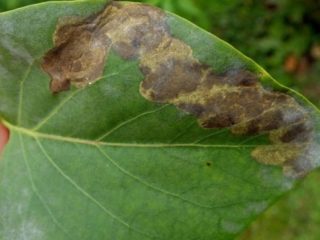Content
It is quite difficult to get rid of lilac growth on a site, because this shrub tends to grow strongly, spreading its root system in the nearby area. But not all crop varieties form shoots, and those that fill the area can be fought quite successfully. The main thing is to choose the right and effective method.
Possible reasons for the growth of root shoots
Uncontrolled growth of shrubs can lead to the entire plot being covered with fluffy trees, and land owners will have to face the question of how to remove lilac shoots. First, it is necessary to establish the cause of the growth of root shoots in order to subsequently select an effective method to get rid of it and carry out a number of preventive measures.
The multi-trunked shrub, which is one of the favorites among the people, is capable of reproducing by root suckers, seeds, as well as shoots that appear in the place of the cut trunk.Due to the length of the life cycle (about 100 years), many young shoots have time to form from lilacs. From each lateral root branch, several new root shoots are formed annually, capable of moving 50 - 60 cm away from the mother plant. As a result, a bush that has lived for about half a century can grow 8 - 10 meters around. Such uncontrolled growth leads to the fact that the bush fills the free space, actively multiplies and simply squeezes out all other vegetation from the territory.
In addition, lilacs may not produce shoots, but reproduce by seed. And it is simply impossible to guess the exact place where a new seedling will sprout, since the wind can carry the seed quite far from the mother plant.
Are there varieties of lilacs that do not produce shoots?
Almost all varieties that were bred on the basis of common lilac produce a lot of shoots. But there are some exceptions.
Lilac without shoots varieties:
- Hungarian lilac;
- Belicent;
- Hiawatha;
- Dream;
- Beauty of Moscow;
- Christopher Columbus.
Several ways to remove lilac shoots
To get rid of lilac roots in your area, you need to make a lot of effort. The choice of the appropriate method depends on the type of shrub and the scale of the disaster. After all, dealing with a couple of extra bushes is much easier than getting rid of entire lilac plantations.
Uprooting
The most common and very effective way to remove lilac roots from a site is to physically impact the bush.Uprooting is a complex and quite labor-intensive process; it does not guarantee complete destruction of the bush, but it is one of the safest methods for getting rid of lilacs.
If you don’t want to use chemicals to combat lilac growth, you can try this method. To do this you need:
- Use a sharp saw to saw down the main trunk of the bush.
- Cut off the shoots right to the roots.
- From the roots within sight, rake the top layer of soil to make it easier to reach them.
- Using a shovel or crowbar, forcefully pull large roots out of the ground. It is better to start at some distance from the trunk, where the root is more pliable.
- Pull out the broken piece.
- Continue working until you can get rid of all the lilac root growth in the ground.
Many experienced gardeners prefer not to waste their own energy fighting shrubs. Instead, they resort to a trick - using automotive equipment. A tow rope is tied to a car, tractor or other vehicle, secured to the roots of the bush and pulled out. After such a procedure, all that remains is to dig up the area and get rid of all the remaining particles of roots.
How to remove lilacs from a plot using salt
You can also get rid of lilac growths using regular table salt. To do this, you simply need to fill the area with the shoots with several kilograms of salt. Usually it is enough to pour about 1 kg per square meter. Then the area should be poured with boiling water and covered with any material through which light will not reach the soil. This can be slate, boards, sheets of iron, etc. In the next two years, the treated area should not be opened. Only in this case will the shoots not come to life again in the spring.
But this method is dangerous, since there is a risk of salinizing the soil, which will ultimately lead to the fact that nothing will grow on such a substrate. If the area of overgrown bushes is not too large, it is better to choose a different method to get rid of lilacs.
How to deal with lilac growth with chemicals
Chemical preparations - herbicides - will help to remove lilacs from the site forever and in a short time. Commonly used products include Tornado and Roundup. But they are too weak to get rid of an adult plant. Therefore, it is recommended to carry out processing in a certain way.
In order to grow lilacs, you need to do the following at the beginning of the season:
- Cut off the main trunk and shoots as close to the root as possible.
- Wait a few weeks for the young to appear, which will become a supplier of poison to the lilac root.
- Treat each shoot with the above chemicals (any one of your choice), and it is best to coat each sprout with a brush so that the poison completely covers it.
- Monitor the appearance of new shoots, and if they are detected, also lubricate with the chemical.
- Once new shoots stop growing, treatment can be stopped.
- The branches must be covered with a black bag so that the sun's rays do not fall on them.
- Reveal next spring. By this time, the poison should reach the root system and destroy it.
- The final stage is digging up the roots and disposing of them.
There are also more effective chemicals that can get rid of not only lilac growth, but also centuries-old trees. They are hazardous to health, so working with them must be accompanied by increased safety measures (rubber gloves, special uniform, respiratory protection, goggles).
Among the products approved for use in the fight against lilacs, the following can be distinguished:
- Arbonal;
- Arsenal New.
Other methods
To destroy lilac shoots, you can use other methods of combating the bush.
- Mulching. You can weaken the growth and reduce its growth rate using a thick layer of mulch. It is necessary to lay a thick layer of sawdust or humus on the ground and thoroughly pour it with warm water. After 2 - 3 weeks it will be possible to begin removing the roots.
- Some gardeners claim that even simply covering the roots with black film has a detrimental effect on the shoots. The dark color attracts sunlight, but does not allow air to enter the soil. A greenhouse effect occurs, which has a detrimental effect on the shoots. Roofing felt is also suitable as a shelter.
- Fresh manure can also help get rid of a lilac bush. To do this, within a radius of 2 meters from the bush, it is necessary to water the soil with fresh manure diluted with a small amount of water. This fertilizer literally burns out the lilac root system.
- If you pour sodium nitrate into the shoots at the beginning of autumn, the plant, having received rich feeding, will not prepare for winter rest, but will begin to grow actively. It is this factor that will be destructive for him.
Set of preventive measures
Since it is quite difficult to remove lilacs from the site, it is better to prevent it from growing. Simple preventative measures will help you get rid of the growth.
Among them are the following:
- When preparing a place for planting seedlings, you must immediately take care of installing a protective screen that will prevent the roots from growing.For this, roofing felt, boards, and metal sheets are used, which are dug a few meters from the dug hole.
- As soon as the growth begins to appear, it must be removed immediately, cutting it off to the very root.
- When planting lilacs, it is important to mulch the nearby area of soil so that the offspring do not gain strength as they grow.
- At the end of flowering, the brushes must be trimmed so that the seeds do not fall off and scatter throughout the area.
Simple preventive measures will allow you to keep the growth of lilacs under control, and then you won’t have to fight it in the future.
Conclusion
You can get rid of lilac growth on your property using folk remedies - this is a long and painstaking process, but very safe. You can use automotive equipment or apply another type of physical influence on the lilac root system. In cases where these methods are not effective, special chemicals can also be used. But the easiest way is to prevent uncontrolled growth of the bush by promptly limiting its capabilities.











